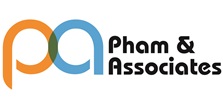
UNITED STATES: USPTO to Reconsider Policy on Examining gTLDs
In August, the U.S. Patent and Trademark Office (USPTO) made available on its website a draft Examination Guide regarding applications for marks that are composed solely of
In August, the U.S. Patent and Trademark Office (USPTO) made available on its website a draft Examination Guide regarding applications for marks that are composed solely of generic top-level domains (gTLDs).
USPTO examiners typically use Examination Guides as guidance with regard to certain kinds of issues that frequently arise and are not fully addressed in the Trademark Manual of Examining Procedure or that may update existing USPTO policies. The USPTO sought comment on the draft Examination Guide until September 8, 2013.
Traditionally, the USPTO’s position has been that gTLDs (alone) are merely “abbreviations” of the intended users of a particular gTLD (e.g., .edu for educational institutions) and thus are not registrable because they fail to function as a trademark. However, the new gTLD rollout will mean that some new gTLDs will indeed be likely to function as source identifiers. That is, the new gTLDs are sure to include terms that have trademark significance and therefore may also have trademark significance for domain name registration or registry services when used as a gTLD.
The draft Guide still presumes that an applied-for mark that consists solely of a gTLD will not be registrable; however, if the applicant can prove certain factors, the applicant will be able to overcome this presumption. Specifically, the applicant will need to do the following:
Prove that the applied-for mark can function as a trademark (i.e., as a source identifier), including offering proof of current, relevant U.S. registration(s).
Provide “significant” additional evidence that the proposed mark will “immediately” function as a trademark (e.g., through relevant advertisement samples, substantial expenditures on advertising and/or customer statements).
Provide evidence of an active or currently pending application for a Registry Agreement with ICANN for the subject gTLD.
Confirm that the services offered under the applied-for mark are for the benefit of others.
While clearly putting a significant burden on a would-be trademark applicant for a gTLD, the Guide at least provides the possibility that owners of gTLDs that truly function as source identifiers will be entitled to the grant of a trademark registration for the gTLD and secure the benefits associated therewith.
(Source: INTA Bulletin)


